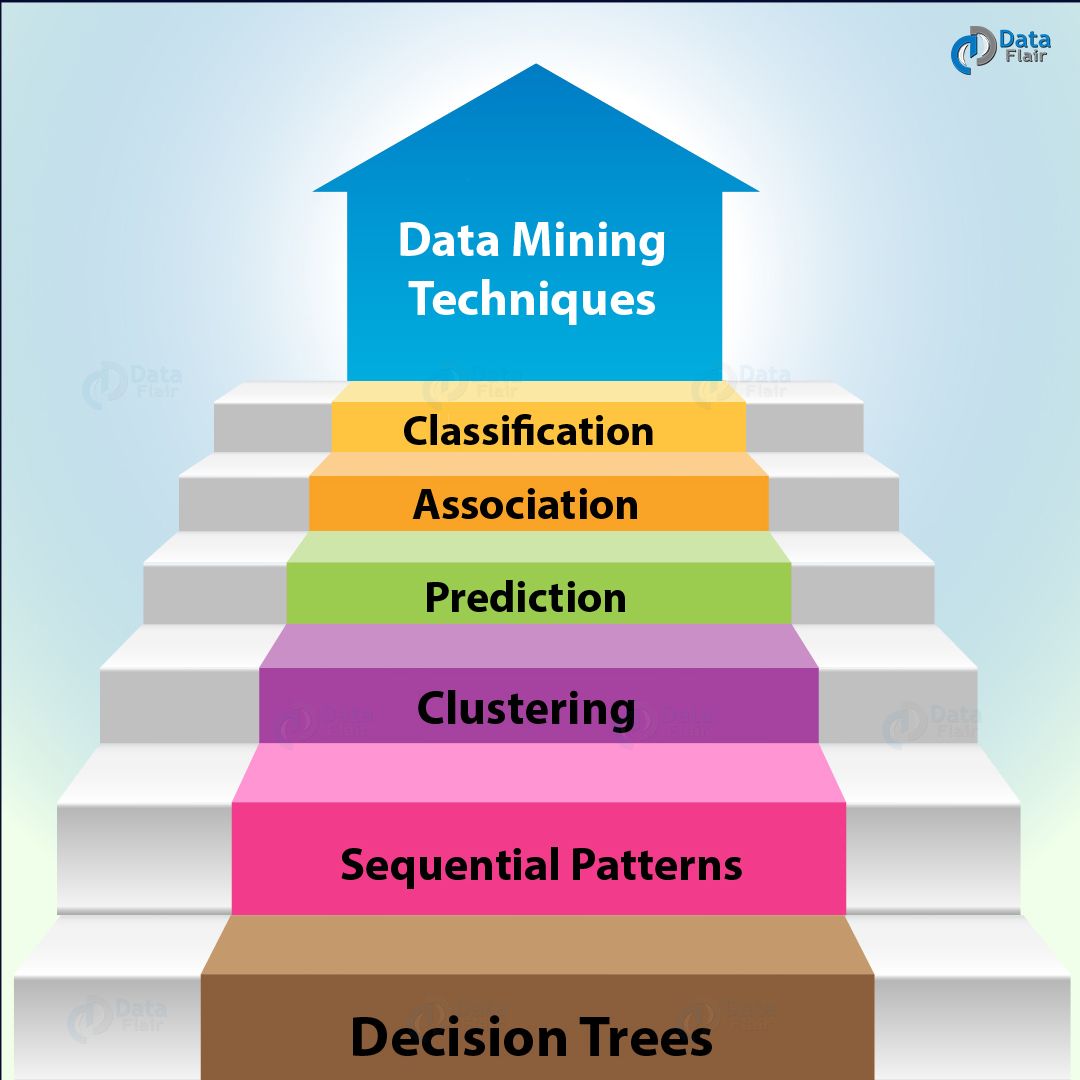Data Mining Techniques – 6 Crucial Techniques in Data Mining
Free Machine Learning courses with 130+ real-time projects Start Now!!
In our last tutorial, we discussed Cluster Analysis in Data Mining. Here, we will learn Data Mining Techniques. As all data mining techniques have their different work and use. We will try to cover all these in a detailed manner.
So, let’s begin Data Mining Algorithms Tutorial.
What are Data Mining Techniques?
There are six important Data Mining Techniques, discussed below-
a. Classification Analysis Technique
We use these data mining techniques, to retrieve important and relevant information about data and metadata. We use it to classify different data in different classes. As this process is similar to clustering. It relates a way that segments data records into different segments called classes.
But unlike clustering, here the data analysts would have knowledge of different cluster. Thus, in classification analysis, we need to apply algorithms. That is we require deciding how new data should be classified.
For Example- Outlook email. They use certain algorithms to characterize an email as legitimate or spam.
b. Association Rule Learning Technique
We use Data Mining Techniques, to identify interesting relations between different variables in the database. Also, the Data Mining techniques used to unpack hidden patterns in the data.
Association rules are so useful for examining and forecasting behaviour. This is recommended in the retail industry.
Also, we use this to determine shopping, basket data analysis. In IT, programmers use association rules to build programs capable of machine learning.
c. Anomaly or Outlier Detection Technique
Basically, this refers particularly to an observation of data items in a dataset. For the data sets that do not match an expected pattern. Anomalies are also known as outliers, novelties, noise, deviations, and exceptions. As this anomaly provides critical and actionable information.
It is an item that deviates from the common average within a dataset or a combination of data. These types of items are statistically aloof as compared to the rest of the data. Hence, it indicates that something out of the ordinary has happened. And further requires additional attention.
Besides, this technique can be used in a variety of domains. Such as intrusion detection, system health monitoring, event detection in sensor networks. Analysts often remove anomalous data from the dataset.
d. Clustering Analysis Technique
The term itself defines its meaning. A cluster means a group of data objects. Also, these objects are similar to the same cluster. As a result, objects are similar to one another within the same group. Although, they are different in the same or other clusters.
Basically, we can say that clustering is a process of discovering groups and clusters. We have to discover in such a way that the degree of association between two objects is highest.
Also if they belong to the same group and lowest otherwise. A result of this analysis can be used to create customer profiling.
e. Regression Analysis Technique
In statistical terms, we use it to identify and analyze the relationship between variables. Also, it helps you understand the characteristic value of the dependent variable changes.
But if any one of the independent variables is varied.
As a result, one variable is dependent on another, but it is not vice versa. Generally, used for prediction and forecasting.
f. Prediction Technique
As we use prediction, data mining technique for some particular uses. As it is used to discovers the relationship between independent and dependent variables.
For instance, we use prediction for the sale to predict profit for the future. Let, suppose the sale is an independent variable, profit could be a dependent variable. Thus, we can draw a fitted regression curve that is used for profit prediction.
g. Sequential Patterns Technique
This is an important part of data mining techniques. This technique seeks to discover similar patterns.
In sales, with historical transaction data, businesses can identify a set of items. Thus, customers buy together at different times in a year. Then businesses can use this information to recommend customers. That they buy it with better deals based on their purchasing frequency in the past.
h. Decision Trees Technique
A decision tree is a very important terminology of Data Mining. This particularly used in data mining. As it plays an important role in data mining. Just because this model is very easy to understand for the users.
In decision tree technique, the root of a decision tree is a simple question. As they having multiple answers. Also, each question that is leading to set of questions. As they help us in determining the data. So, at last, we can make the final decision on it.
So, this was all about Data Mining Techniques. Hope you like our explanation.
Conclusion
As a result, we have studied Data Mining techniques. We have learned these techniques in a detailed manner. Furthermore, if you feel any query feel free to ask in a comment section.
If you are Happy with DataFlair, do not forget to make us happy with your positive feedback on Google



Thanks for sharing this great blog….
Hii Andrew,
Thank you for reading our complete tutorial on Data Mining Techniques. We have shared many more blogs for you. Here is one, please have a look –
https://data-flair.training/blogs/data-mining-architecture/
Hope this also helps you.